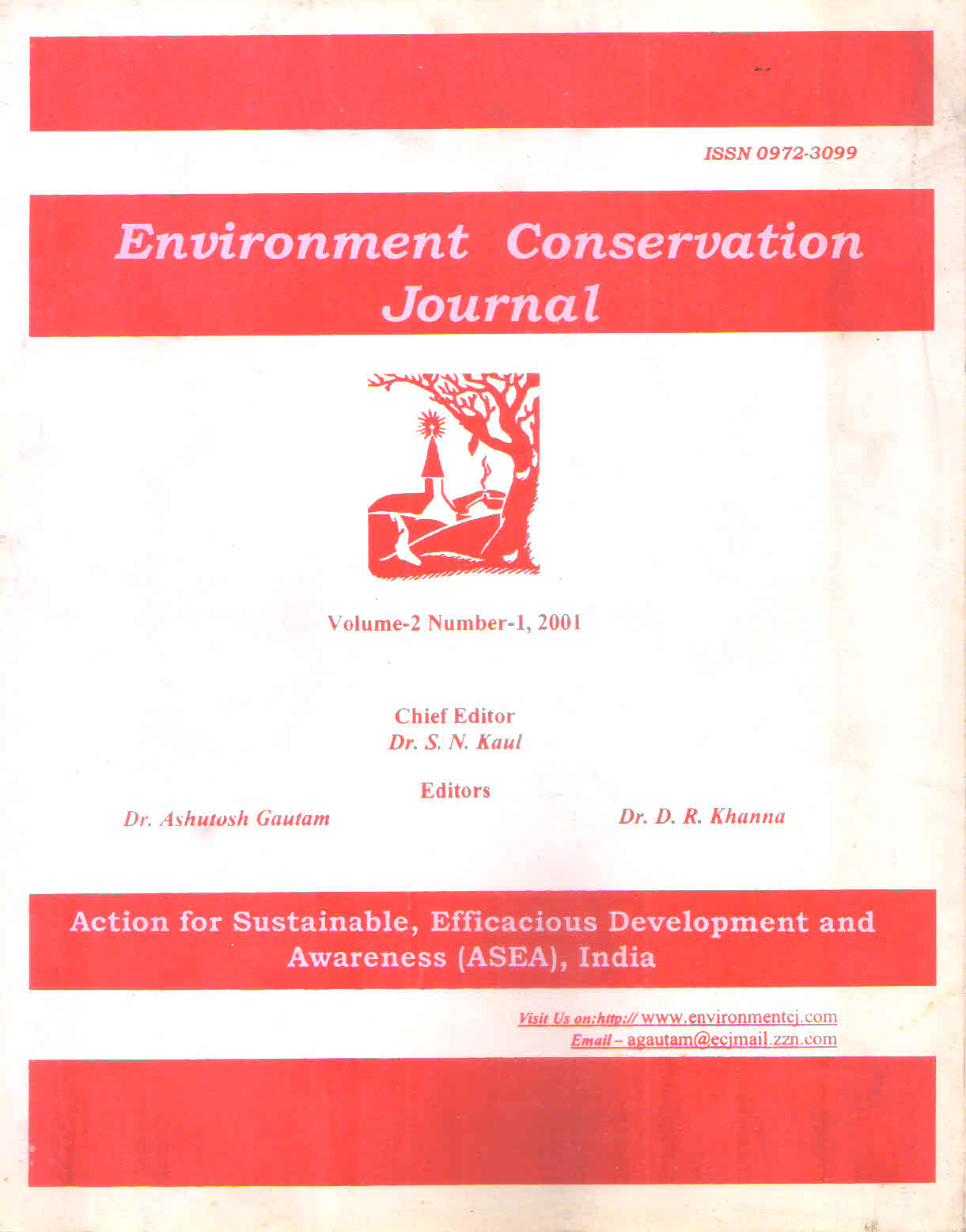Main Article Content
Abstract
Urea and ammonia are mostly present in wastewaters from nitrogenous fertilizer industries. Urea can not be oxidized by usual oxidation methods, microbiological hydrolysis of urea is necessary for removal of urea from wastewater. Biological degradation of urea is a two staged process; (i) urea hydrolysis and (ii) ammonia stripping/nitrification-denitrification. Microbiological hydrolysis of urea through biohydrolyzer removes urea from fertilizer effluents , in which ,ureolytic bacteria Bacillus Pasteurii converts urea into ammonia and carbon dioxide through ammonium carbonate as an intermediate product. Removal of ammonia is either by stripping or converting into nitrate on nitrification by chemoautotraphic bacteria Nitrosomonas sp. and further by Nitrobacter sp. into nitrate. On dentirification, nitrate is finally converted into nitrogen gas by means of heterotrophic bacteria. Based on earlier laboratory investigations, urea bio-hydrolyser was designed, installed and commissioned in fertilizer industry as additional full scale unit to treat urea and ammonia bearing wastewaters. Ammonia stripped effluent was mixed with septic tank effluents from industry and township sewage and routed through various lagoons cultured with algae - chlorella to minimize nitrogen. Evaluation of full scale urea bio-hydrolyser and effluent treatment plant before and after modifications at ETP is discussed in this paper.
Keywords
Article Details
Copyright (c) 2001 Environment Conservation Journal

This work is licensed under a Creative Commons Attribution-NonCommercial 4.0 International License.
References
- APHA-AWWA-WPCF 1989. Standard Methods for the Examination of Water and Wastewater,17" Edition, American Public Health Association, Washington, DC.
- Evans, W. H. David, E. J. and Patterson, S, J. 1973. Bio-degradation of urea in river water under controlled laboratory conditions. Water Res. 7, 975. DOI: https://doi.org/10.1016/0043-1354(73)90179-6
- Gillette, L.A., Miller, D. L. and Redman, H. E. 1952. Appraisal of Chemical waste problem by fish toxicity tests. Sewage and Industrial Waste. 24, 1397.
- India 1995. A reference Annual, Published by Ministry of Information and Broadcasting. Government of India, pp. 545-546.
- IS : 9841. 1981. Guidefor treatment and Disposal ofFertilizer Industry, Indian Standards Institution, New Delhi.
- Monthly Review oflndian Economy 1997. Economy Intelligence Service Series, 1997, Published by Center for Monitoring Indian Economy (CMIE) Pvt. Ltd., February, 1997.pp.58.
- Watt, G. W. and Chrisp, J. D. 1954. Spectrophotometric method for determination of urea.Anal. Chem. 26, 452. DOI: https://doi.org/10.1021/ac60087a006
References
APHA-AWWA-WPCF 1989. Standard Methods for the Examination of Water and Wastewater,17" Edition, American Public Health Association, Washington, DC.
Evans, W. H. David, E. J. and Patterson, S, J. 1973. Bio-degradation of urea in river water under controlled laboratory conditions. Water Res. 7, 975. DOI: https://doi.org/10.1016/0043-1354(73)90179-6
Gillette, L.A., Miller, D. L. and Redman, H. E. 1952. Appraisal of Chemical waste problem by fish toxicity tests. Sewage and Industrial Waste. 24, 1397.
India 1995. A reference Annual, Published by Ministry of Information and Broadcasting. Government of India, pp. 545-546.
IS : 9841. 1981. Guidefor treatment and Disposal ofFertilizer Industry, Indian Standards Institution, New Delhi.
Monthly Review oflndian Economy 1997. Economy Intelligence Service Series, 1997, Published by Center for Monitoring Indian Economy (CMIE) Pvt. Ltd., February, 1997.pp.58.
Watt, G. W. and Chrisp, J. D. 1954. Spectrophotometric method for determination of urea.Anal. Chem. 26, 452. DOI: https://doi.org/10.1021/ac60087a006





